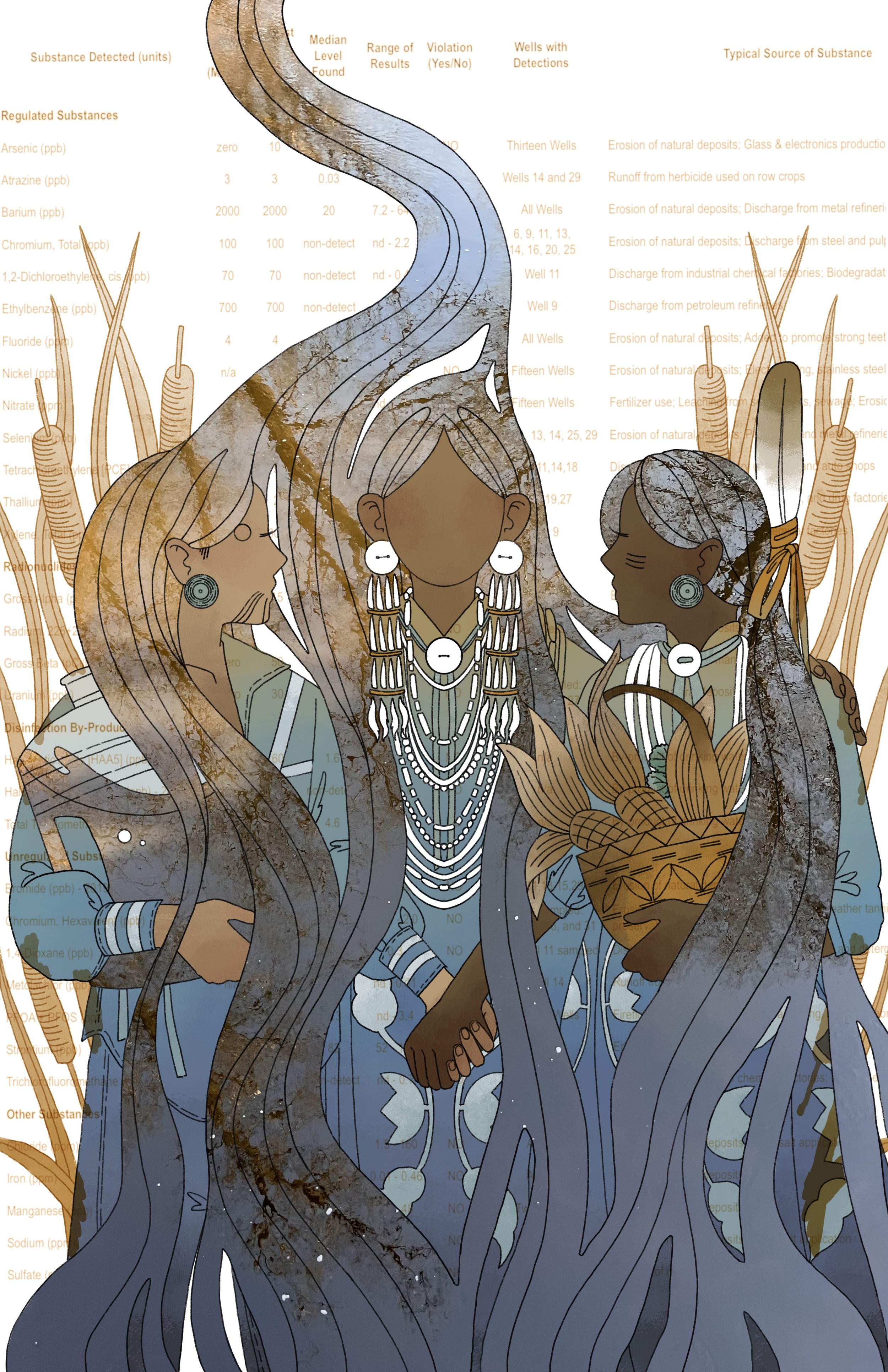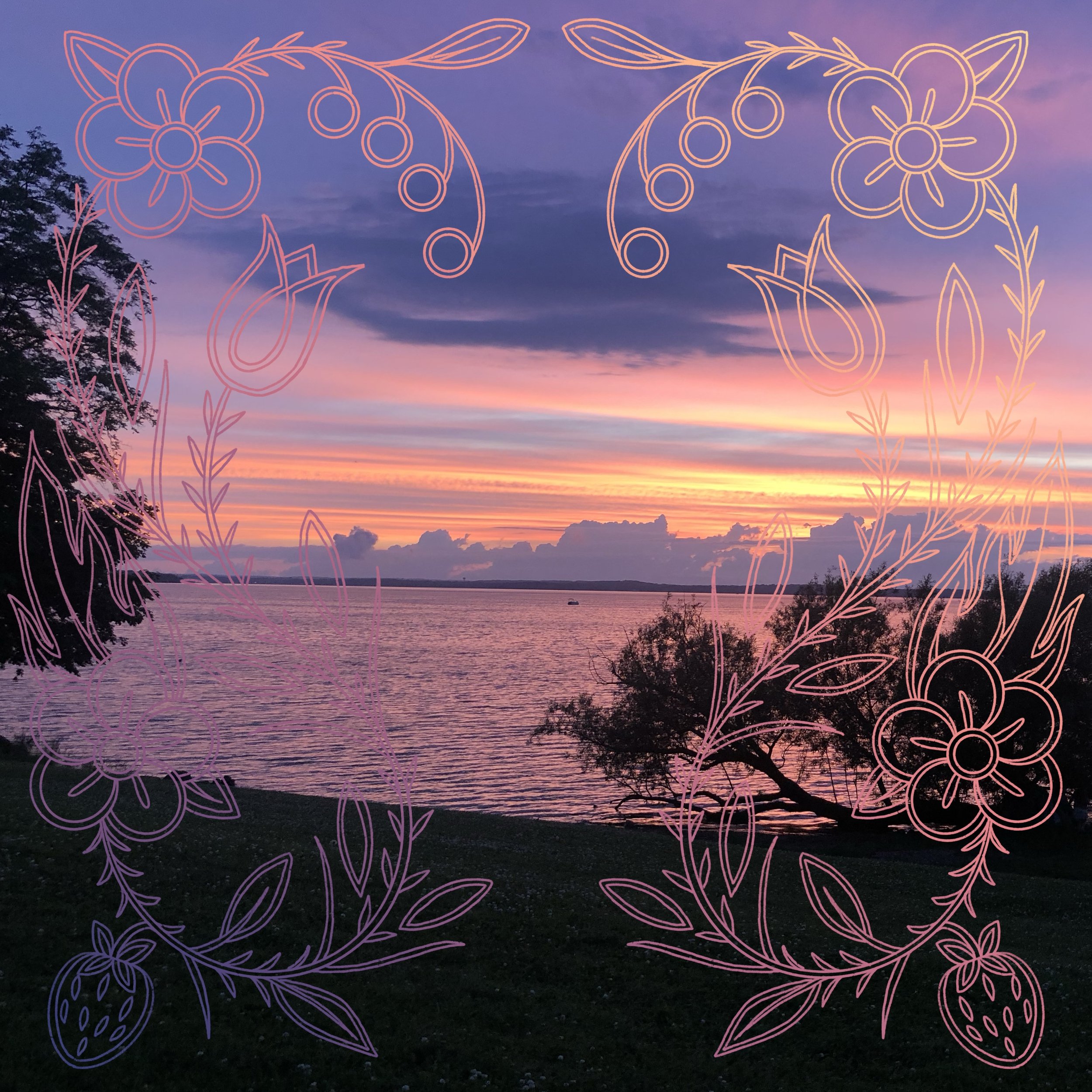left
Water as Kin, Water as Community
11x17, digital. 2022
This piece was the first of four to be created throughout the 2022 One Water Artist Residency. It tells the story of Indigenous community members’ relationships to water in Teejop // Madison and was created in collaboration with a focus group of Indigenous participants. In the style of ledger art created by Plains nations, the design is superimposed over the 2021 water quality report in Madison, and the hair is created using a picture of the Yahara river taken by me.
left
Generational Effects of Water
11x17, digital. 2022
This piece was the second of four to be created throughout the 2022 One Water Artist Residency. It tells the story of Black generational trauma and how it impacts multi generational families in the Madison area and was created in collaboration with a focus group of Black and Brown participants. In the style of ledger art created by Plains nations, the design is superimposed over the chemical structure of oxytocin, the chemical that links generations together, and the water is created using a picture of the Yahara river where it joins the Rock river taken by me.
left
Global Water Perspectives
11x17, digital. 2022
This piece was the third of four to be created throughout the 2022 One Water Artist Residency. It tells the story of immigrant relationships to water in Madison and in their home countries, and how the two interweave to create a unique perspective. It was created in collaboration with a focus group of South Asian immigrant participants. In the style of ledger art created by Plains nations, the design is superimposed over a map of the Madison area, and the dresses are filled using a picture of the sunset over Lake Mendota taken by me.
left
Food Sovereignty
11x17, digital. 2022
This piece was the fourth of four to be created throughout the 2022 One Water Artist Residency. It tells the story of Indigenous food sovereignty movements in the Madison area, specifically in the Badfish Creek watershed, the mouth of which is created by effluent from the Nine Springs Wastewater Treatment Plant. It was created in collaboration with food sovereignty activists and farmers in the Madison area. In the style of ledger art created by Plains nations, the design is superimposed over a map of the Badfish Creek Watershed, and the river is created by a photo of Badfish Creek taken by me.
The final portion of my residency was using a risograph printer to print each of the illustrations I made onto the 1933 building plans for the Nine Springs Wastewater Treatment Plant, evoking the tradition of Plains ledger art in a modern format. These prints are delicate and non-archival, and the schematics they are printed over often include handwritten notes. Risograph ink varies in opacity and so all of this can be seen through the illustrations themselves, creating a layered visual story.































